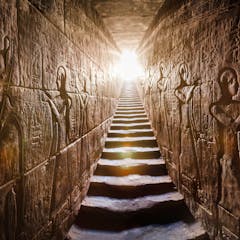
Articles on Aboriginal history
Displaying 1 - 20 of 101 articles

Many First Nations celebrate the time when boats from across the Indonesian archipelago were not intercepted by Australian authorities.

Barrow Island off the coast of Western Australia holds a unique record of First Nations people. For millennia, they lived on vast plains that are now drowned by the sea.

For a decade, debate has raged over Dark Emu’s account of Aboriginal agriculture. But ancient food production in Australia is more complex than labels like farming or hunter-gathering suggest.

The river wasn’t merely a physical entity – it was a symbol of spiritual and cultural significance, serving as the life force which flows through Country.

For over 100 years, the Victorian school curriculum has failed to give generations of students the chance to learn about Indigenous political movements.

Western music was often taught to Aboriginal people as preparation for assimilation into white Australian society – but Aboriginal people continued to play the violin even when not prescribed.

When Shauna Bostock began researching a book on her family, she thought it would be limited to her Aboriginal ancestry. But then a late-night phone call led her down a surprising path.

Non-Indigenous Australians need to actively seek the truth about past violence and injustice against Indigenous Australians.

The office of the Protector of Aborigines was established in an effort to hear to the ‘wants, wishes and grievances’ of Aboriginal people. It failed almost immediately.

Research conducted with Gkuthaarn and Kukatj community members helps paint a picture of the lives of eight young Aboriginal people who lived during early colonial expansion.

The sad reality is that if the demands of these early activists had been met nearly a century ago, we would not be suffering the severe disadvantage that hovers over Aboriginal lives still today.

A 20-year cultural revitalisation effort has led to a songline being sung again on Country, to an audience of 140 people.

In her new SBS documentary, Rachel Perkins travels across vast territory to capture key aspects of a war that lasted more than 100 years.

In a new study, archaeologists have re-discovered the role boomerangs played in retouching stone tools.

The Kakadu region has gone through immense transformation throughout history. How can archaeological food scraps tell us about how the First Australians adapted?

A review of studies of Parramatta demonstrates an extensive deep-time archive of Indigenous activity extending over 14,000 years.

History isn’t just learning facts. Students learn about the past by researching information and synthesising it to form an evidence-based argument. This skill is useful for a range of careers.

We now have a glimpse into where early Indigenous Australians likely travelled all those tens of thousands of years ago.

Some 17,000 years ago, Aboriginal artists often depicted kangaroos, fish, birds, reptiles, echidnas and plants — especially yams.

Settler colonials are beginning to understand the true impacts of the criminal takeover of Indigenous lands. They are seeking to right the balance and achieve a spiritual resolution.
